Great Astronomers by Robert Stawell Ball (uplifting novels .txt) 📕
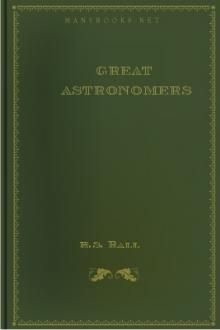
- Author: Robert Stawell Ball
- Performer: -
Book online «Great Astronomers by Robert Stawell Ball (uplifting novels .txt) 📕». Author Robert Stawell Ball
have to determine the errors in the positions of our telescopes
and the errors in the going of our clocks, and then we have to
determine what the observations would have been had our telescopes
been absolutely perfect, and had our clocks been absolutely
correct. There are also many other matters which have to be
attended to in order to reduce our observations so as to obtain
from the figures as yielded to the observer at the telescope the
actual quantities which it is his object to determine.
The work of effecting these reductions is generally a very
intricate and laborious matter, so that it has not unfrequently
happened that while observations have accumulated in an
observatory, yet the tedious duty of reducing these observations
has been allowed to fall into arrear. When Airy entered on his
duties at Greenwich he found there an enormous mass of
observations which, though implicitly containing materials of the
greatest value to astronomers, were, in their unreduced form,
entirely unavailable for any useful purpose. He, therefore,
devoted himself to coping with the reduction of the observations
of his predecessors. He framed systematic methods by which the
reductions were to be effected, and he so arranged the work that
little more than careful attention to numerical accuracy
would be required for the conduct of the operations. Encouraged
by the Admiralty, for it is under this department that Greenwich
Observatory is placed, the Astronomer Royal employed a large force
of computers to deal with the work. BY his energy and admirable
organisation he managed to reduce an extremely valuable series of
planetary observations, and to publish the results, which have
been of the greatest importance to astronomical investigation.
The Astronomer Royal was a capable, practical engineer as well
as an optician, and he presently occupied himself by designing
astronomical instruments of improved pattern, which should
replace the antiquated instruments he found in the observatory.
In the course of years the entire equipment underwent a total
transformation. He ordered a great meridian circle, every part
of which may be said to have been formed from his own designs.
He also designed the mounting for a fine equatorial telescope
worked by a driving clock, which he had himself invented.
Gradually the establishment at Greenwich waxed great under his
incessant care. It was the custom for the observatory to be
inspected every year by a board of visitors, whose chairman was
the President of the Royal Society. At each annual visitation,
held on the first Saturday in June, the visitors received a report
from the Astronomer Royal, in which he set forth the business
which had been accomplished during the past year. It was on these
occasions that applications were made to the Admiralty, either for
new instruments or for developing the work of the observatory in
some other way. After the more official business of the
inspection was over, the observatory was thrown open to visitors,
and hundreds of people enjoyed on that day the privilege of seeing
the national observatory. These annual gatherings are happily
still continued, and the first Saturday in June is known to be
the occasion of one of the most interesting reunions of scientific
men which takes place in the course of the year.
Airy’s scientific work was, however, by no means confined to the
observatory. He interested himself largely in expeditions for the
observation of eclipses and in projects for the measurement of
arcs on the earth. He devoted much attention to the collection of
magnetic observations from various parts of the world. Especially
will it be remembered that the circumstances of the transits of
Venus, which occurred in 1874 and in 1882, were investigated by
him, and under his guidance expeditions were sent forth to observe
the transits from those localities in remote parts of the earth
where observations most suitable for the determination of
the sun’s distance from the earth could be obtained. The
Astronomer Royal also studied tidal phenomena, and he rendered
great service to the country in the restoration of the standards
of length and weight which had been destroyed in the great fire at
the House of Parliament in October, 1834. In the most practical
scientific matters his advice was often sought, and was
as cheerfully rendered. Now we find him engaged in an
investigation of the irregularities of the compass in iron ships,
with a view to remedying its defects; now we find him reporting on
the best gauge for railways. Among the most generally useful
developments of the observatory must be mentioned the telegraphic
method for the distribution of exact time. By arrangement with
the Post Office, the astronomers at Greenwich despatch each
morning a signal from the observatory to London at ten o’clock
precisely. By special apparatus, this signal is thence
distributed automatically over the country, so as to enable the
time to be known everywhere accurately to a single second. It was
part of the same system that a time ball should be dropped daily
at one o’clock at Deal, as well as at other places, for the
purpose of enabling ship’s chronometers to be regulated.
Airy’s writings were most voluminous, and no fewer than forty-eight memoirs by him are mentioned in the “Catalogue of Scientific
Memoirs,” published by the Royal Society up to the year 1873,
and this only included ten years out of an entire life of most
extraordinary activity. Many other subjects besides those of a
purely scientific character from time to time engaged his
attention. He wrote, for instance, a very interesting treatise on
the Roman invasion of Britain, especially with a view of
determining the port from which Caesar set forth from Gaul, and
the point at which he landed on the British coast. Airy was
doubtless led to this investigation by his study of the tidal
phenomena in the Straits of Dover. Perhaps the Astronomer Royal
is best known to the general reading public by his excellent
lectures on astronomy, delivered at the Ipswich Museum in 1848.
This book has passed through many editions, and it gives a most
admirable account of the manner in which the fundamental problems
in astronomy have to be attacked.
As years rolled by almost every honour and distinction that
could be conferred upon a scientific man was awarded to Sir George
Airy. He was, indeed, the recipient of other honours not often
awarded for scientific distinction. Among these we may mention
that in 1875 he received the freedom of the City of London, “as a
recognition of his indefatigable labours in astronomy, and of his
eminent services in the advancement of practical science, whereby
he has so materially benefited the cause of commerce and
civilisation.”
Until his eightieth year Airy continued to discharge his labours
at Greenwich with unflagging energy. At last, on August 15th,
1881, he resigned the office which he had held so long with such
distinction to himself and such benefit to his country. He had
married in 1830 the daughter of the Rev. Richard Smith, of
Edensor. Lady Airy died in 1875, and three sons and three
daughters survived him. One daughter is the wife of Dr. Routh, of
Cambridge, and his other daughters were the constant companions of
their father during the declining years of his life. Up to the
age of ninety he enjoyed perfect physical health, but an
accidental fall which then occurred was attended with serious
results. He died on Saturday, January 2nd, 1892, and was buried in
the churchyard at Playford.
HAMILTON.
William Rowan Hamilton was born at midnight between the 3rd and
4th of August, 1805, at Dublin, in the house which was then 29,
but subsequently 36, Dominick Street. His father, Archibald
Hamilton, was a solicitor, and William was the fourth of a family
of nine. With reference to his descent, it may be sufficient to
notice that his ancestors appear to have been chiefly of gentle
Irish families, but that his maternal grandmother was of Scottish
birth. When he was about a year old, his father and mother
decided to hand over the education of the child to his uncle,
James Hamilton, a clergyman of Trim, in County Meath. James
Hamilton’s sister, Sydney, resided with him, and it was in their
home that the days of William’s childhood were passed.
In Mr. Graves’ “Life of Sir William Rowan Hamilton” a series
of letters will be found, in which Aunt Sydney details the
progress of the boy to his mother in Dublin. Probably there is no
record of an infant prodigy more extraordinary than that which
these letters contain. At three years old his aunt assured the
mother that William is “a hopeful blade,” but at that time it
was his physical vigour to which she apparently referred; for the
proofs of his capacity, which she adduces, related to his prowess
in making boys older than himself fly before him. In the second
letter, a month later, we hear that William is brought in to read
the Bible for the purpose of putting to shame other boys double
his age who could not read nearly so well. Uncle James appears to
have taken much pains with William’s schooling, but his aunt said
that “how he picks up everything is astonishing, for he never
stops playing and jumping about.” When he was four years and three
months old, we hear that he went out to dine at the vicar’s, and
amused the company by reading for them equally well whether the
book was turned upside down or held in any other fashion. His
aunt assures the mother that ” Willie is a most sensible little
creature, but at the same time has a great deal of roguery.” At
four years and five months old he came up to pay his mother a
visit in town, and she writes to her sister a description of the
boy;-
“His reciting is astonishing, and his clear and accurate
knowledge of geography is beyond belief; he even draws the
countries with a pencil on paper, and will cut them out,
though not perfectly accurate, yet so well that a anybody
knowing the countries could not mistake them; but, you will
think this nothing when I tell you that he reads Latin, Greek,
and Hebrew.”
Aunt Sydney recorded that the moment Willie got back to Trim he
was desirous of at once resuming his former pursuits. He would
not eat his breakfast till his uncle had heard him his Hebrew,
and he comments on the importance of proper pronunciation. At
five he was taken to see a friend, to whom he repeated long
passages from Dryden. A gentleman present, who was not
unnaturally sceptical about Willie’s attainments, desired to
test him in Greek, and took down a copy of Homer which happened
to have the contracted type, and to his amazement Willie went on
with the greatest ease. At six years and nine months he was
translating Homer and Virgil; a year later his uncle tells us
that William finds so little difficulty in learning French and
Italian, that he wishes to read Homer in French. He is
enraptured with the Iliad, and carries it about with him,
repeating from it whatever particularly pleases him. At eight
years and one month the boy was one of a party who visited
the Scalp in the Dublin mountains, and he was so delighted
with the scenery that he forthwith delivered an oration in
Latin. At nine years and six months he is not satisfied until
he learns Sanscrit; three months later his thirst for the
Oriental languages is unabated, and at ten years and four months
he is studying Arabic and Persian. When nearly twelve he
prepared a manuscript ready for publication. It was a “Syriac
Grammar,” in Syriac letters and characters compiled from that of
Buxtorf, by William Hamilton, Esq., of Dublin and Trim. When he
was fourteen, the Persian ambassador,
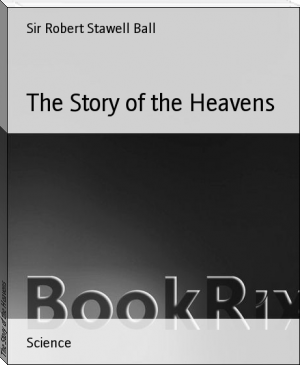
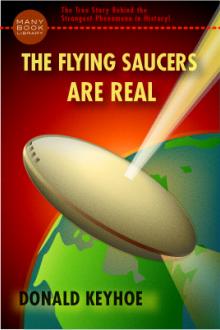

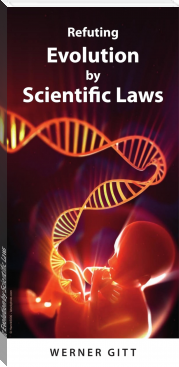
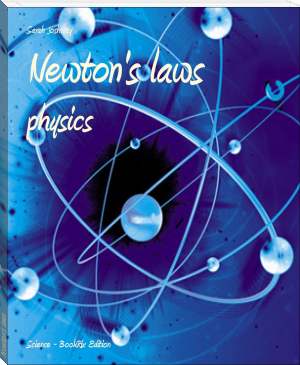
Comments (0)